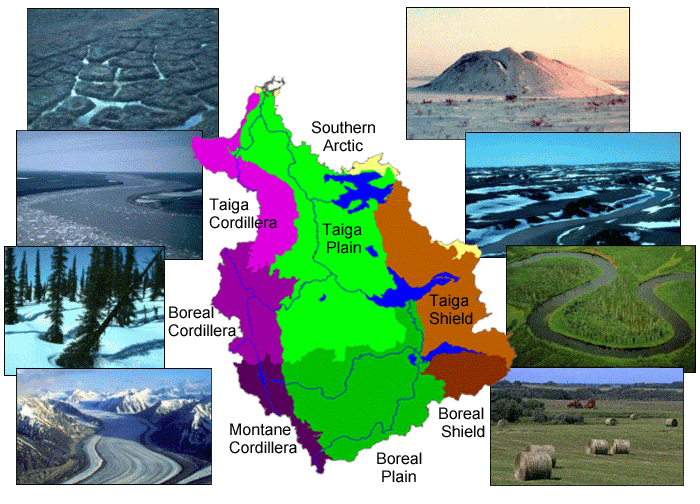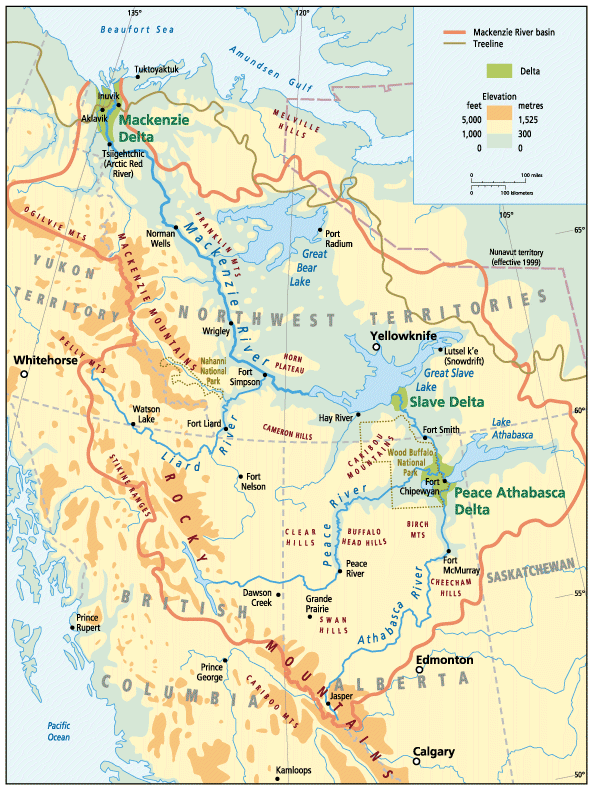|
The Mackenzie River Basin includes all of the land area of the earth that contributes runoff to the Mackenzie River that flows into the Arctic Ocean. The basin covers an area of approximately 1.8 x 106 km2 yet has a population of only 300,000 people. The majority of the inhabitants live in the southern parts of the basin. About 75% of the basin lies within the continuous and discontinuous permafrost zones. The basin receives an average of 410 mm of precipitation per year. Of this, approximately 237 mm is returned to the atmosphere directly through evaporation and transpiration while the remaining 173 mm enters the Arctic Ocean as river flow. The Mackenzie Basin stretches over nearly 20° of latitude (from about 52°N to 70°N) and a wide variety of climatic conditions. Pingos and patterned ground features associated with continuous permafrost are found in the north, while agriculture and forestry are important economic activities in the southern parts of the basin. The basin extends from the Mackenzie and Rocky Mountains on the west, through the Interior Plains to the Canadian Shield on the east. This range of physiographic conditions, in combination with the range of climatic conditions, results in eight of the major ecozones of Canada being represented within the basin. These are shown below.
This map shows some of the major physical and cultural features of the Mackenzie River Basin. It was produced for the Mackenzie Basin Impact Study (MBIS) by Eric Leinberger at the University of British Columbia (you must acknowledge the MBIS project if you use this map). The MBIS project assessed the potential impacts of global warming on regions and inhabitants within the Mackenzie Basin area.
Another good source of background information on the Mackenzie River Basin is the WWW site of the Mackenzie River Basin Board (MRBB). The MRBB was established in 1997 by the Transboundary Waters Master Agreement between the Government of Canada, Saskatchewan, Alberta, British Columbia, Yukon and Northwest Territories. |


